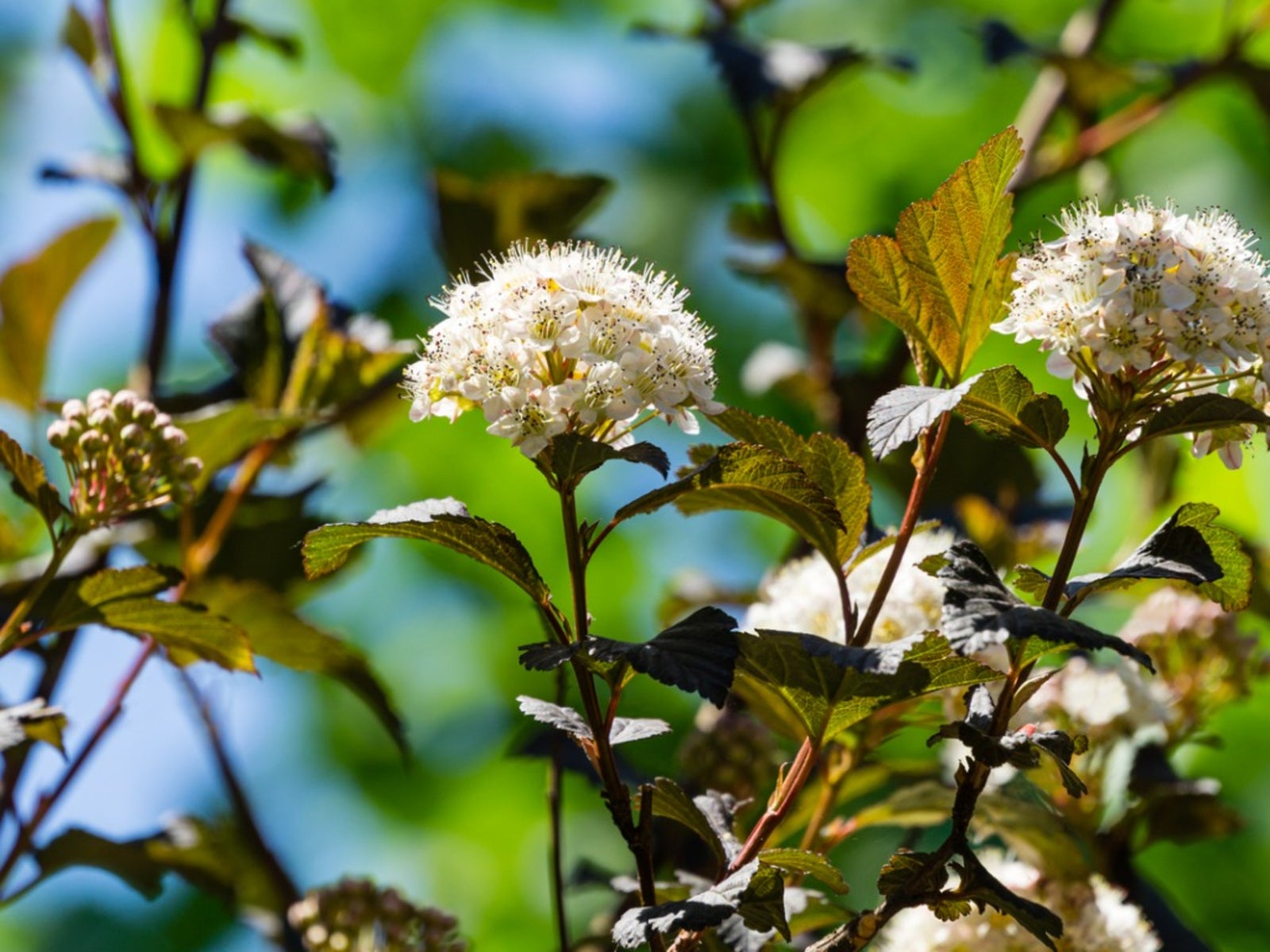Caring For Physocarpus Ninebark - How To Grow A Ninebark Bush


Commonly named for the attractive, exfoliating bark of the species, growing ninebark shrubs is simple. Learning how to grow a ninebark bush successfully is primarily in the location and soil you choose. The Physocarpus ninebark, a North American native, prefers a soil that is only slightly acidic.
Growing Ninebark Shrubs
Though the Physocarpus ninebark family is small, ninebark shrub info indicates there is a cultivar for every landscape. Most ninebark shrub info varies on climates that support growing ninebark shrubs, but most agree the Physocarpus ninebark and newer cultivars do well if planted in USDA Zones 2 through 7. Learning how to grow a ninebark bush includes the proper location and correct planting of the ninebark bush. Dig a hole as deep as the container holding the shrub and twice as wide. Make sure the crown of the ninebark is even with the top of the soil surrounding the planting area. After planting, fill in with backfill taken when digging the hole. Gently fill in around the roots to make sure there are no air pockets and water well until established. Physocarpus ninebark shrubs like a sunny to lightly shaded location. With correct ninebark shrub care, the species reaches 6 to 10 feet (2-3 m.) in height and 6 to 8 feet (2 m.) in height. Allow room for the well-branching shrub to spread out when planting in the landscape, as ninebark shrub care does not necessarily include heavy pruning.
Ninebark Shrub Care
Established ninebark shrubs are drought tolerant and can thrive with only occasional watering and limited fertilization in spring with a balanced fertilizer as part of ninebark shrub care. Pruning for shape and thinning inner branches will likely be all that is necessary to keep growing ninebark shrubs healthy and attractive. If you prefer, renewal pruning to a foot (31 cm.) above the ground can be included in ninebark shrub care during dormancy every few years, but you'll miss the excellent winter interest of the ninebark's peeling bark. Some cultivars of the shrub are smaller and more compact. ‘Seward Summer Wine' reaches only 5 feet (1.5 m.) and displays reddish purple foliage with whitish pink flowers in spring. ‘Little Devil' reaches just 3 to 4 feet (1 m.) around in height, with deep burgundy foliage to accent the pink blooms.
Sign up for the Gardening Know How newsletter today and receive a free copy of our e-book "How to Grow Delicious Tomatoes".

Becca Badgett was a regular contributor to Gardening Know How for ten years. Co-author of the book How to Grow an EMERGENCY Garden, Becca specializes in succulent and cactus gardening.